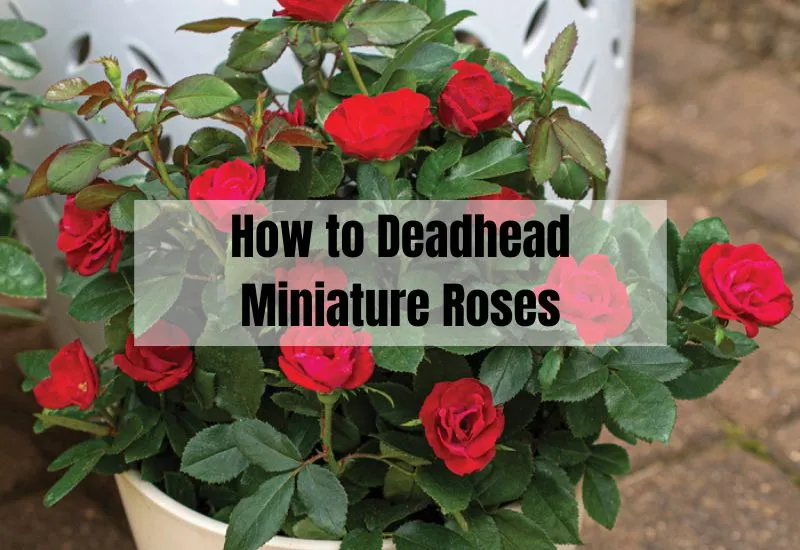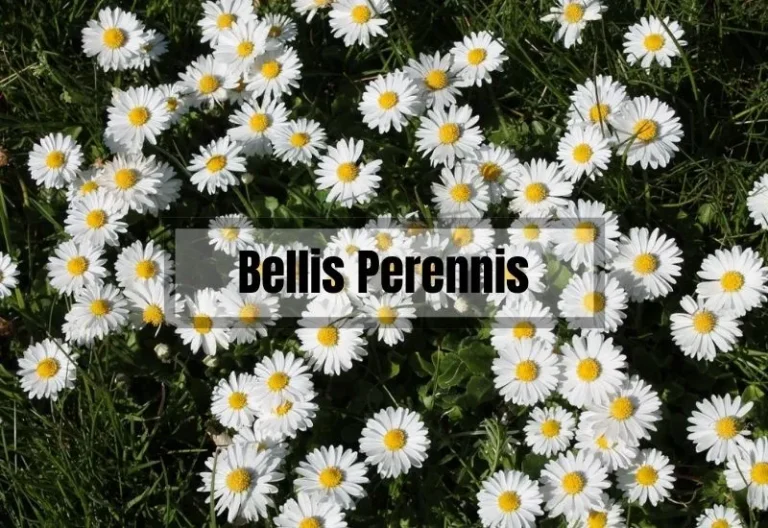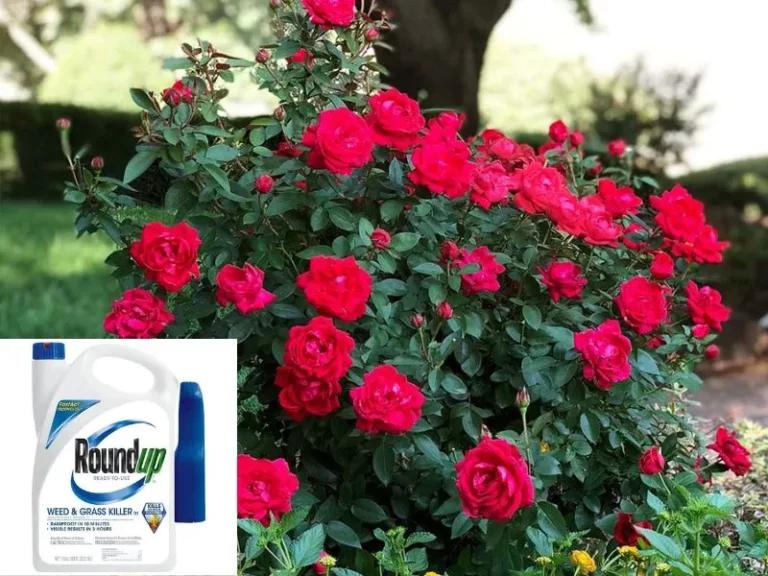Unlock the Secrets: How to Deadhead Miniature Roses Like a Pro
Are you tired of lackluster blooms on your miniature roses? Look no further than our comprehensive guide on deadheading to unleash their full potential! In this article, we’ll reveal the art of deadheading and share essential care tips to ensure beautiful, continuous blooms.
But that’s not all – we’ll also explore common pests and diseases that can hinder your roses’ growth and provide expert advice on how to combat them.
Get ready to transform your garden with these small but mighty blossoms and take your rose game to the next level!

How to Deadhead Miniature Roses
First things first, let’s talk about the purpose of deadheading. Deadheading is the process of removing spent blooms from your roses. This not only keeps your plants looking tidy but also encourages the growth of new flowers.
When you remove the old blooms, your roses can direct their energy towards producing new blossoms instead of forming seeds. So, how do you deadhead miniature roses? Follow these simple steps:
Choose the Right Time
The best time to deadhead your roses is when the blooms start to fade, and petals begin to fall off. Be sure to deadhead throughout the blooming season to encourage continuous flowering.
Gather your Tools
You’ll need a pair of sharp, clean pruning shears or scissors to make clean cuts. Ensure your tools are clean and sharp to avoid damaging the plant and spreading diseases.
Identify the Spent Blooms
Look for flowers that are wilting, turning brown, or losing their petals. These are the blooms you’ll want to remove.
Make the Cut
Locate the first set of five leaflets below the spent bloom. Cut the stem at a 45-degree angle, about ¼ inch above this leaflet set. This will encourage new growth and more blooms.
Clean Up
Dispose of the spent blooms and any fallen petals to prevent diseases and pests.
Remember, consistency is key! Keep an eye on your miniature roses throughout the season and deadhead as needed to keep them looking their best.
Caring for Miniature Roses
Aside from deadheading, there are other essential aspects of caring for your miniature roses. Let’s go over the basics:
Light Requirements
Miniature roses love sunlight! Make sure they get at least six to eight hours of direct sun each day for the best growth and blooms.
Soil and Watering Tips
These little beauties thrive in rich, well-drained, and loamy soil. Water them regularly, providing at least 1 inch of water per week.
Be sure to water deeply to promote good root development and aim for the base of the plant to avoid wetting the delicate blooms.
Fertilization
Miniature roses are heavy feeders, so regular fertilization is a must. Use commercial rose food or an all-purpose fertilizer according to label instructions. Feed your roses when they first leaf out and again after each heavy flush of blooms.
Pruning and overwintering
Prune your miniature roses in late winter or early spring, removing dead or broken wood and trimming back about one-third of the plant to maintain its shape. Proper winter care is essential to protect your roses from cold temperatures and frost.
Types of Miniature Roses
There are hundreds of varieties of miniature roses, but they generally fall into these categories:
Climbers
These miniature roses have a vertical rambling growth habit and can be trained to grow against supports. Their flowers may be small, but their height can reach impressive lengths!
Trailers
These varieties have a cascading growth habit, making them perfect for hanging baskets or draping over walls. Their trailing growth adds a unique charm to any garden space.
Micro-mini
The smallest of all miniature roses, micro-minis are perfect for container gardening, fairy gardens, or even as houseplants. Their petite size and delicate blooms will definitely steal your heart.
Common Pests and Diseases
Just like their larger counterparts, miniature roses can also be affected by pests and diseases. Here are some common issues and how to address them:
Black Spot
This fungal disease causes black spots on leaves and can lead to defoliation. To prevent black spot, ensure proper air circulation around your roses and avoid overhead watering. Remove any affected leaves and use a fungicide if necessary.
Powdery Mildew
This fungal disease appears as a white, powdery substance on leaves and stems. Prevent powdery mildew by providing proper air circulation and avoiding overhead watering. Fungicides can be used if needed.
Insect Damage
Aphids, spider mites, and Japanese beetles are common pests that can damage your miniature roses. Inspect your plants regularly for signs of infestation.
You can use insecticidal soap or horticultural oil to control these pests, or simply knock them off with a strong spray of water.
How to Encourage Miniature Roses to Bloom
Aside from deadheading, there are other ways to promote continuous blooming in your miniature roses:
- Sunlight and feeding requirements: As mentioned earlier, miniature roses love sunlight and require regular feeding. Provide your roses with at least six to eight hours of direct sunlight each day, and feed them according to label instructions for the best results.
- Deadheading techniques for continuous blooming: Consistent deadheading is essential for promoting continuous blooms. Remember to deadhead throughout the blooming season to keep your roses looking their best and producing more flowers.
Frequently Asked Questions (FAQs)
What’s the difference between roses and miniature roses?
Miniature roses are smaller versions of standard roses, featuring tiny flowers and leaves. Their compact size makes them perfect for container gardening, small gardens, or even as houseplants.
Can miniature roses grow indoors?
Yes! Miniature roses can grow indoors, provided they have enough sunlight and proper care. Place them near a sunny window and follow the same care guidelines as you would for outdoor plants.
Are miniature roses easy to care for?
Miniature roses are relatively easy to care for, but they do require some maintenance, like deadheading and regular feeding. With the right care, your miniature roses will reward you with continuous blooms throughout the season.
Conclusion
Deadheading your miniature roses is an essential practice for keeping your plants looking their best and encouraging continuous blooms. With the right care, your miniature roses will reward you with an endless display of captivating blossoms.
So, grab your pruning shears and show your roses some love. And don’t forget to enjoy the beauty and charm that these tiny but mighty flowers bring to your garden!
Related Posts:
- What is Rosa Persica : Origin, Uses, Care & Diseases
- Unveiling the Beauty of Bonica 82: An All-Inclusive Guide to this Majestic Rose
- Identifying and Resolving Miniature Indoor Rose Problems: Your Complete Troubleshooting Guide
- The Art of Growing Miniature Roses Outdoors: A Detailed Step-by-Step Guide
- Understanding the Safety of Miniature Roses: Are They Toxic to Cats?






